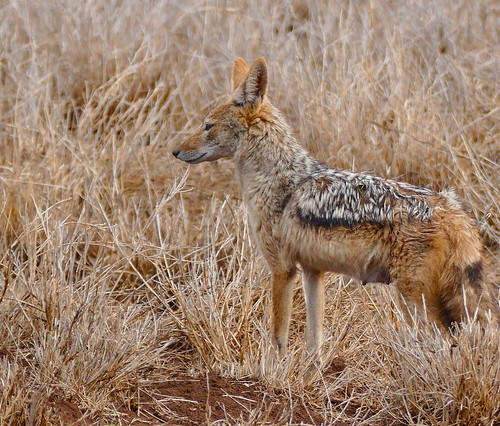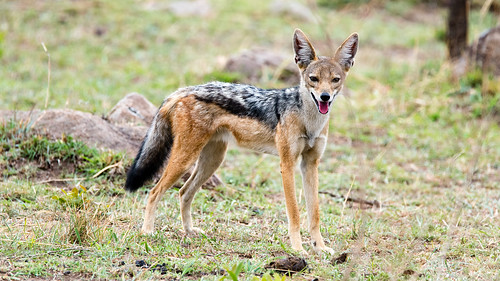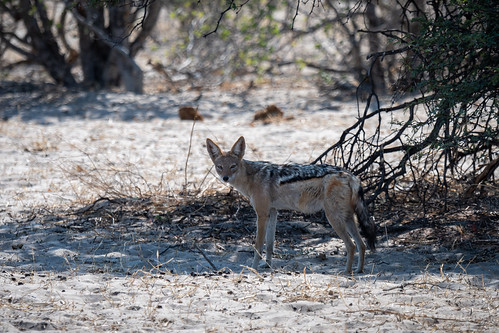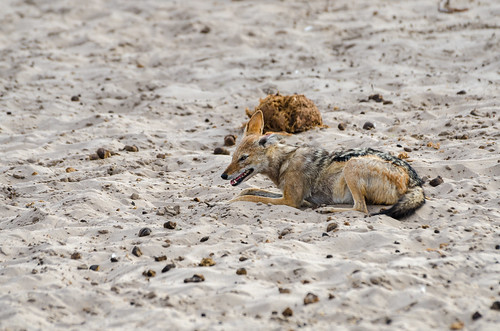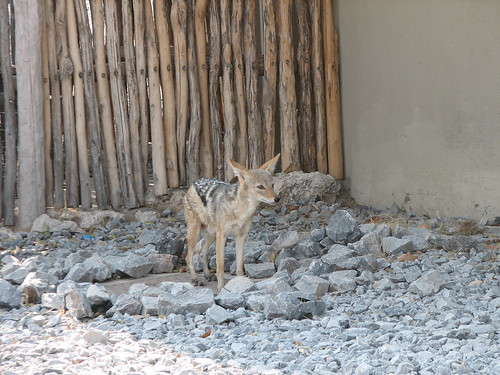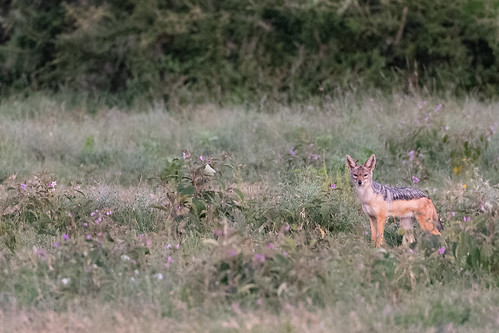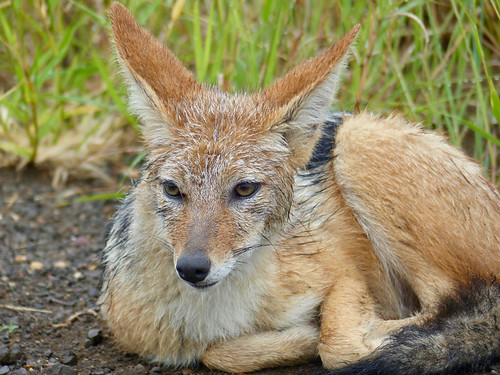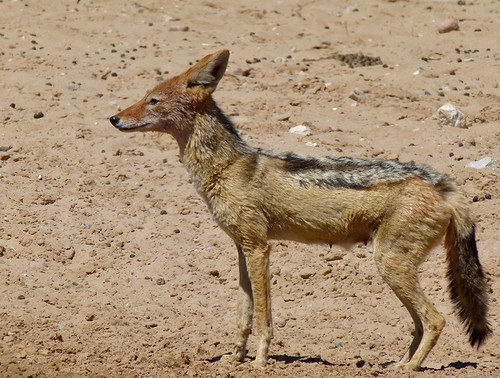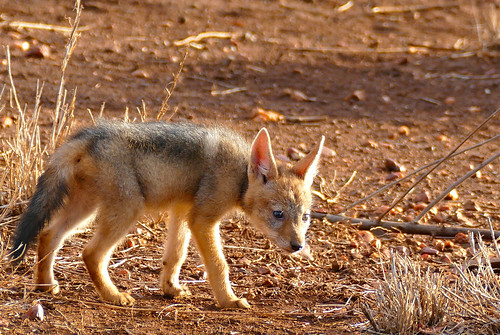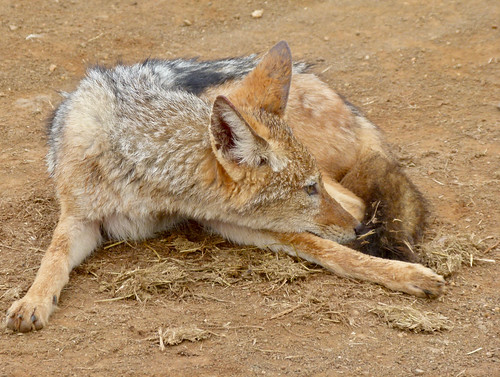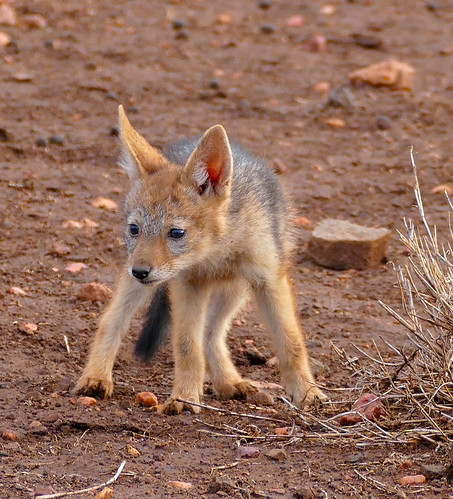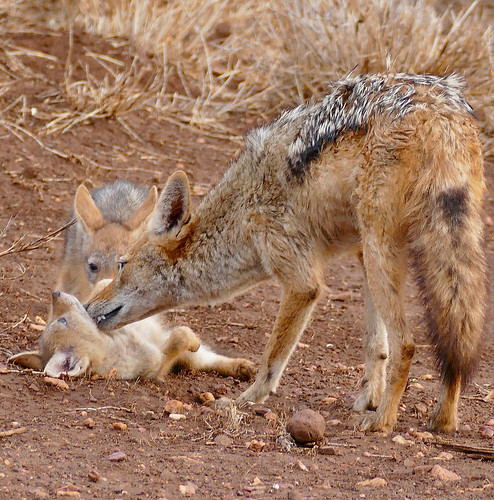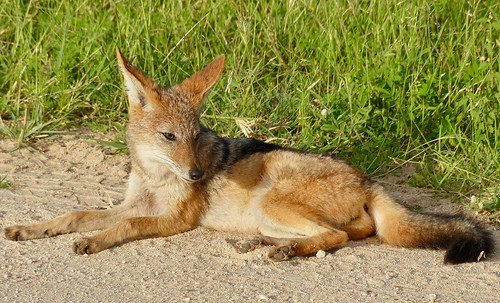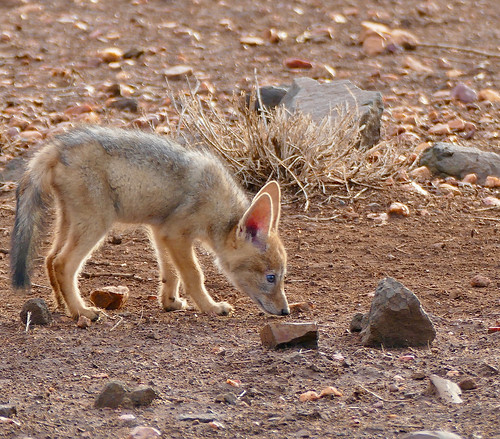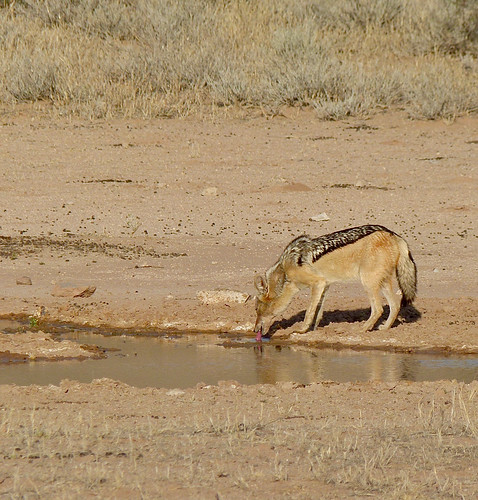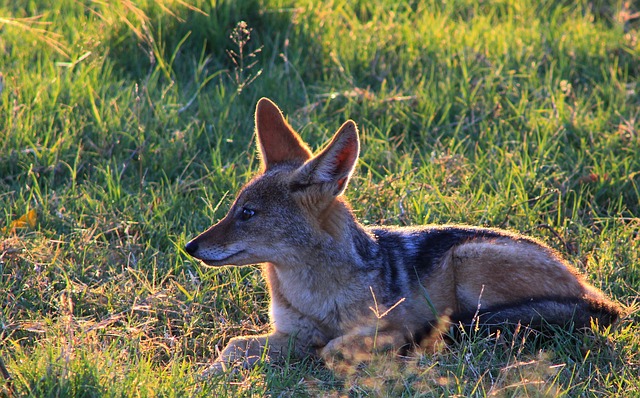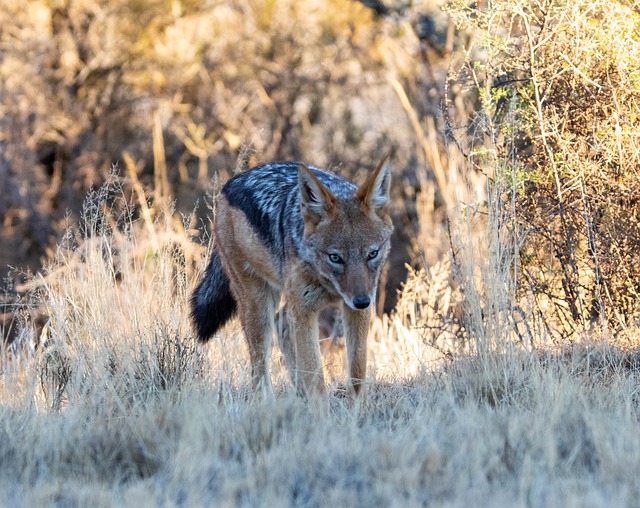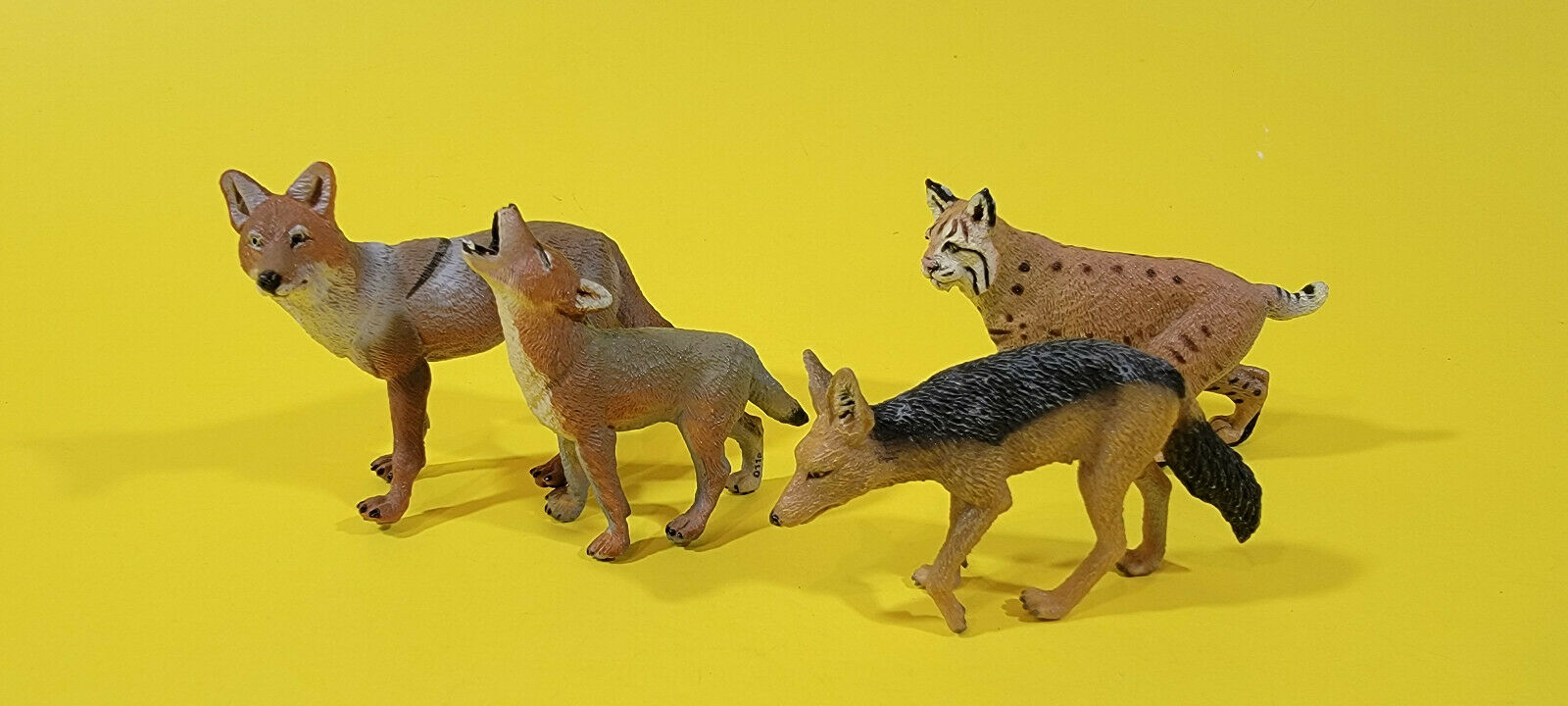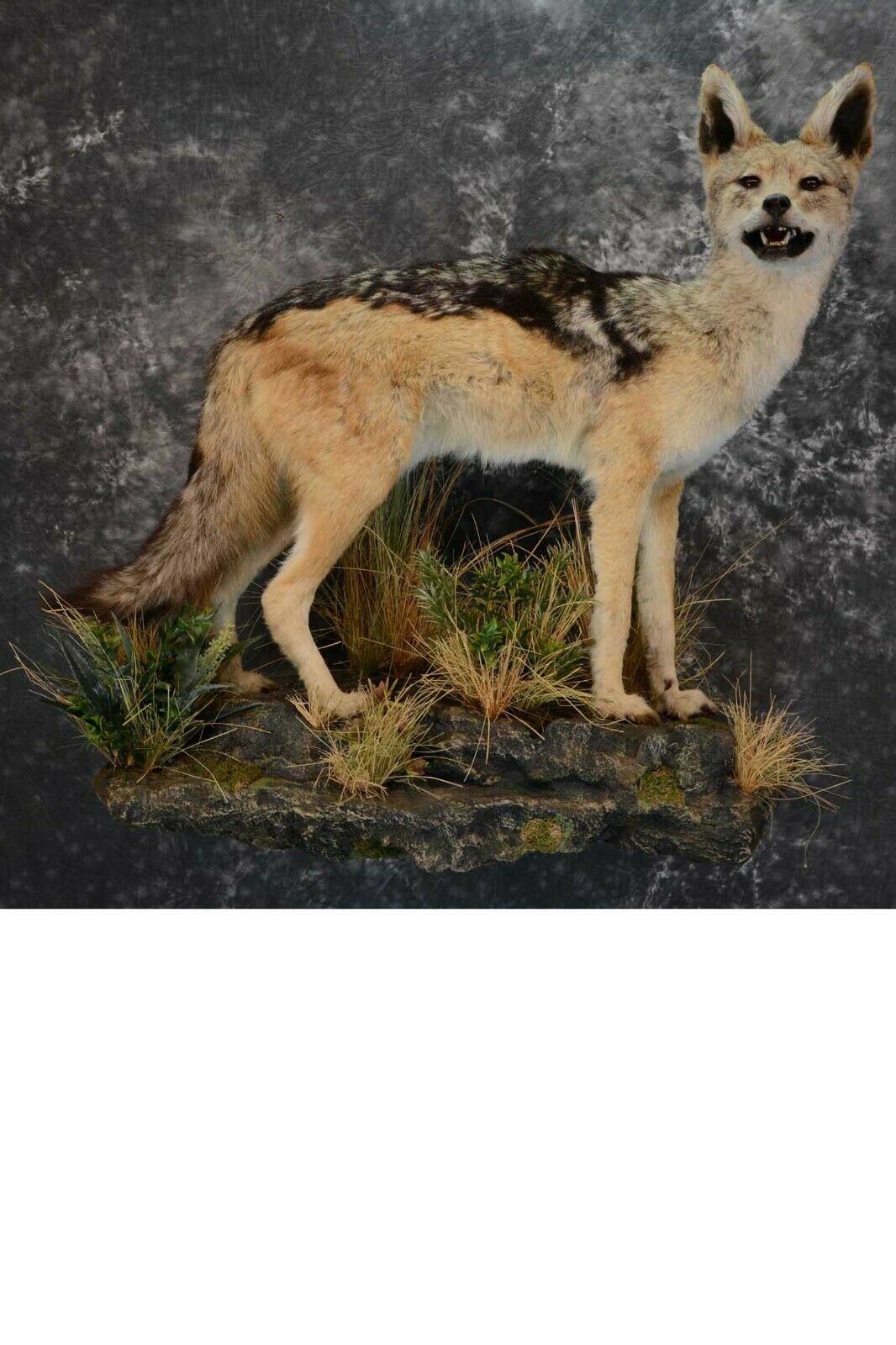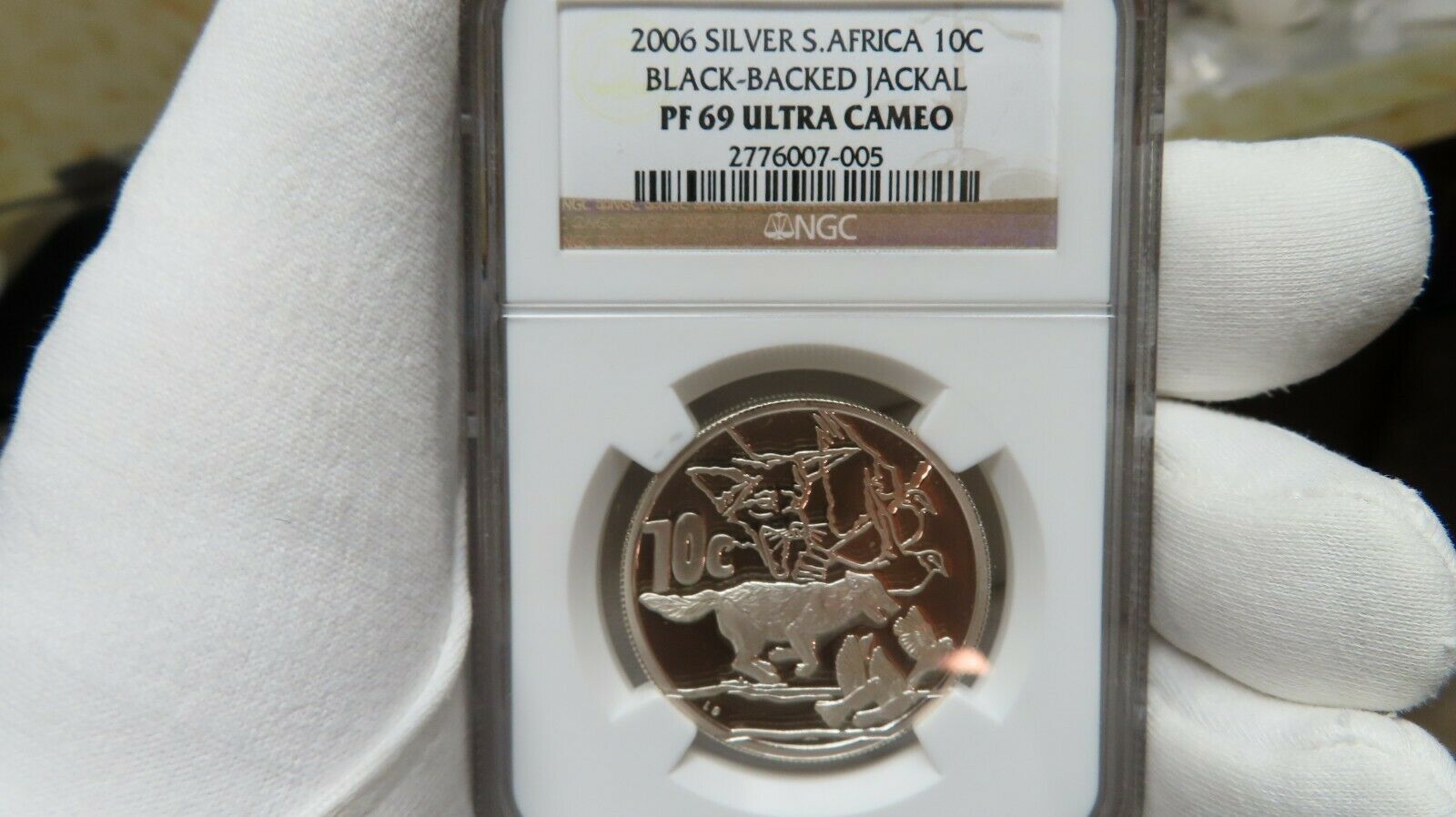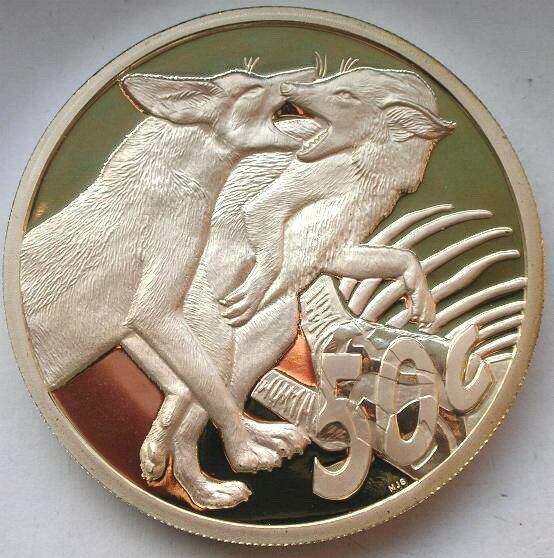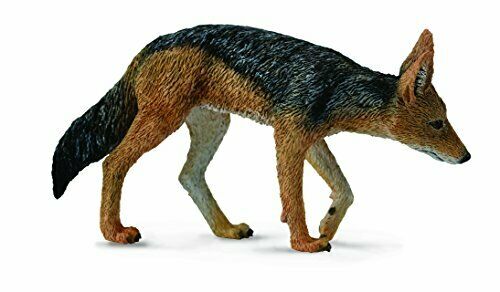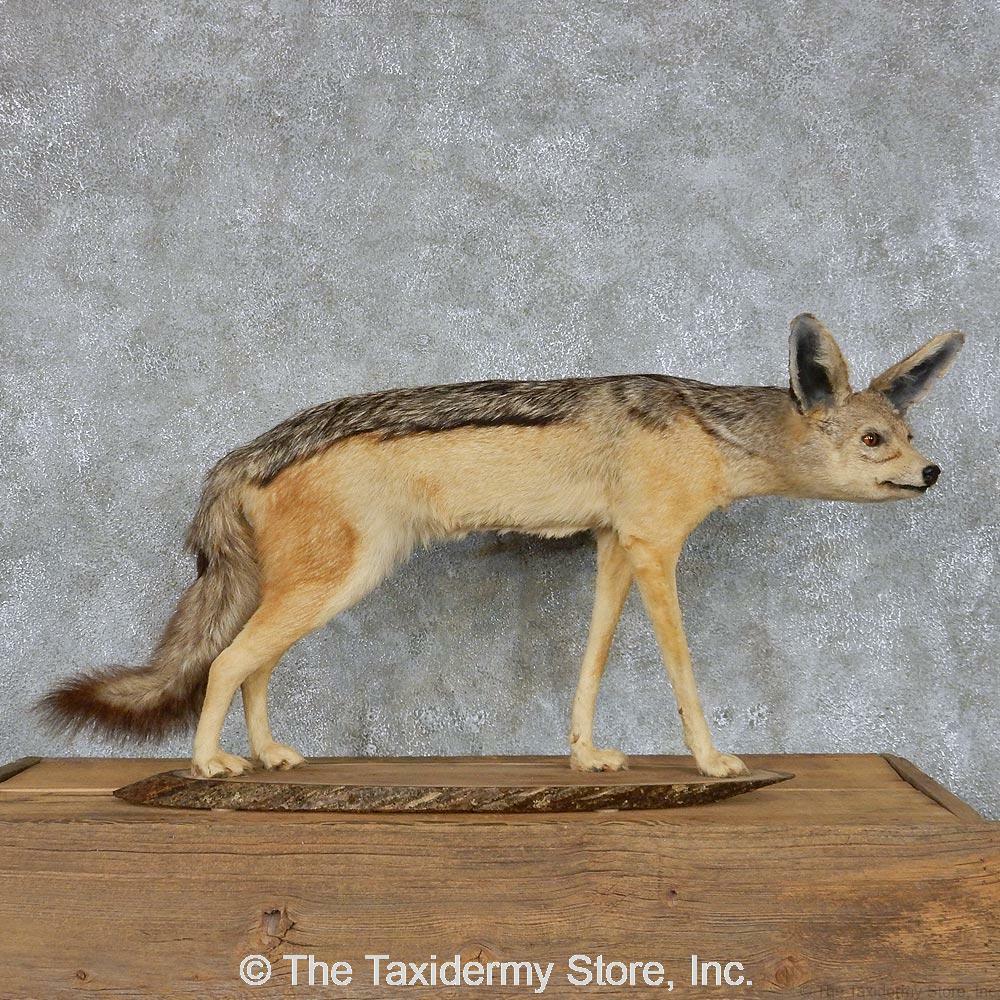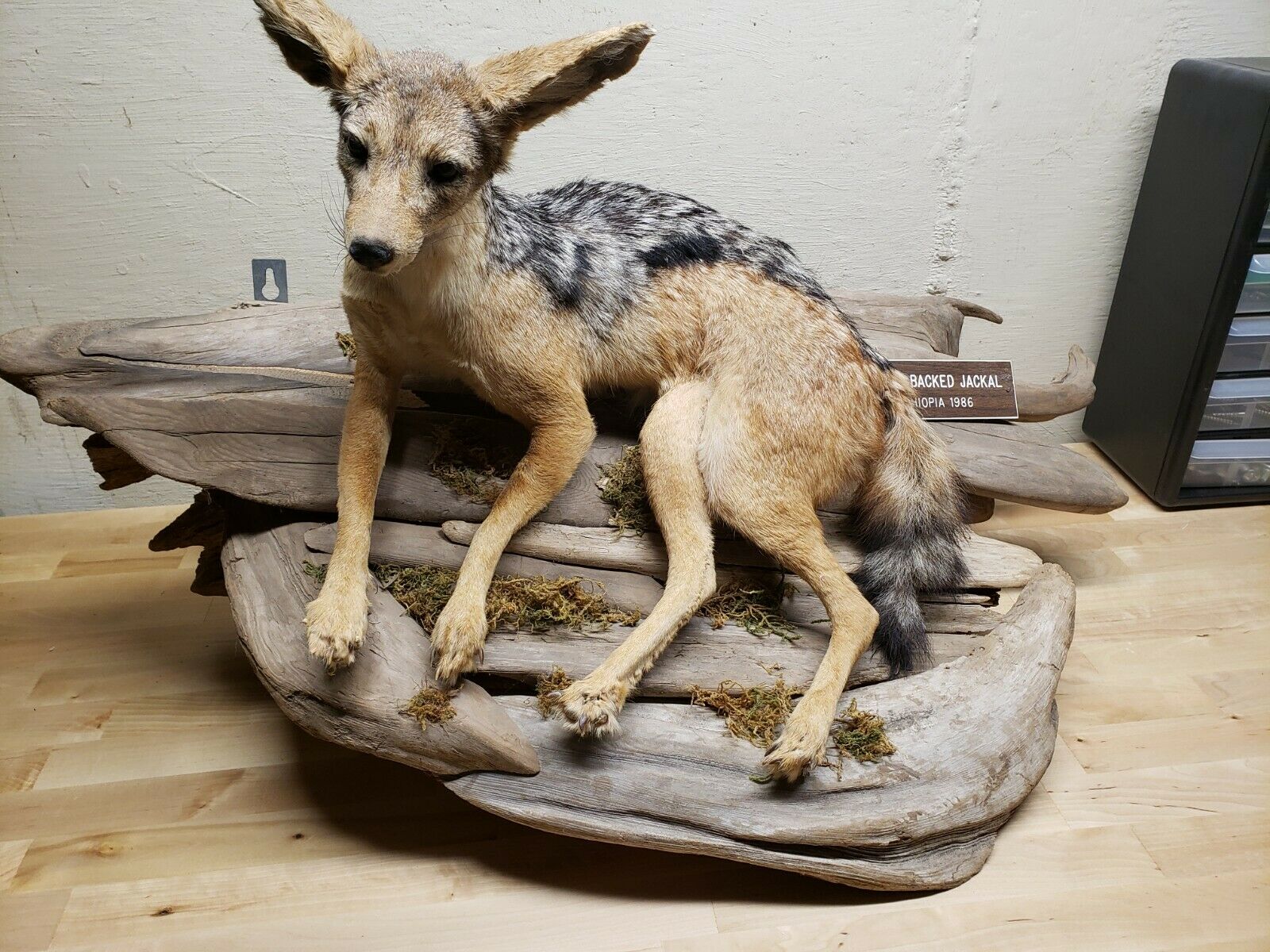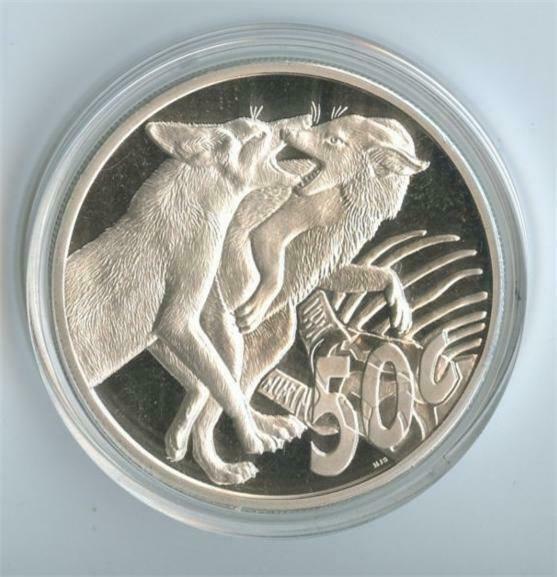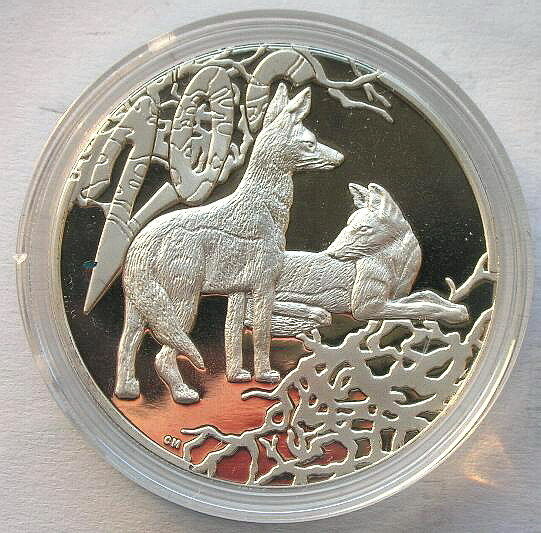The Black-backed Jackal is a large canine that is native to east and south Africa. The species has a low concern status, due to its broad appeal and adaptability according to the IUCN. The species is a fox-like animal with a reddish-brown to tan coat and a black saddle from the shoulders to the base of the tail. It provides a wide assortment of food sources, feeding small to mid-sized animals as well as plant matter and human waste. The animal is monogamous which may survive in the family and raise the young generation. It is a very old species that had very little change for decades after the Pleistocene.
The Black-backed Jackal is endemic to Africa, found in two separate subpopulations: one in East Africa; and one in southern Africa. The species is generally found in savanna, grassland, and rocky terrain.
Black-backed jackals are carnivores that feed primarily on insects and other small animals, including rodents, reptiles, and birds. They live in small family groups, organized around an alpha male. The dominant male procures all the food, and the rest of the family scavenges the rest.
Jackals are monogamous, and most mating occurs during the hottest time of the year, in July and August. The gestation period is 30 days, and litters can have from two to six young. The female gives birth to a litter of about 3 to 4 pups; the pups are weaned by the age of 5 months. Young jackals disperse from their natal range after 1 year of age, but adults may remain within 100 kilometers of their natal home.
Black-backed jackals are threatened by habitat loss and fragmentation. They are hunted for bushmeat, and human-related reasons, such as loss of habitat, persecution, and conflict with humans.
Black-backed jackals are protected in some national parks and game reserves. They are also protected in parts of their range. However, black-backed jackals are an opportunistic species and maybe killed by humans if they become a threat to livestock or crops.
The Black-backed Jackal is widely distributed throughout sub-Saharan Africa, from Senegal and southern Mauritania to Angola, Namibia, Botswana, Zimbabwe, South Africa, Mozambique, Swaziland, Lesotho, and, in south-western …
The black-backed jackal is a medium-sized canid with a body length of 32–41 cm (13–16 in) and weighing 2.5–4.2 kg (5–9 lbs). The head, which is slightly distinct from the rest of the body, is wedge-shaped. The ears are large and rounded and set on the sides of the head, and the eyes are set far apart. The muzzle is short and pointed, and the tail is long and bushy, ending in a short, pointed tip. The fur is coarse, with dark, short, and bushy guard hair. The feet have five toes, and all four digits are black. The species is distinguished from the similar, but slightly larger, spotted jackal by the absence of spotting on the underparts. The black-backed jackal is sexually dimorphic, with a male’s head and body length being 26–34 cm (10–14 in) and a female’s being 29–42 cm (11–16 in). The male’s tail is 45–55 cm (18–22 in) long, and the female is 30–45 cm (12–18 in) long. Both sexes have a white, furless patch on the throat, which disappears in the male’s second year. The species is native to Africa and is found only in open habitats, such as savannas and grasslands, but it may adapt to…
Humans are encroaching on the living spaces of jackals.
Top news today!
Black-backed Jackal • Earth.com - Earth.com
October 15, 2021 - Earth.comBlack-backed Jackal • Earth.com Earth.com...
I hate you, but you’re beautiful: The complex connection between jackals and Karoo farmers - Daily Maverick
October 14, 2021 - Daily MaverickI hate you, but you’re beautiful: The complex connection between jackals and Karoo farmers Daily Maverick...
Fossil find introduces a new ancestor to the jackal family tree - The Conversation CA
June 17, 2021 - The Conversation CAFossil find introduces a new ancestor to the jackal family tree The Conversation CA...
Black-backed jackals roam free on farm - Lowvelder
August 11, 2021 - LowvelderBlack-backed jackals roam free on farm Lowvelder...
Facts About Jackals - Live Science
January 26, 2017 - Live ScienceFacts About Jackals Live Science...
Digital Safari: What do jackals eat? - CGTN
August 25, 2020 - CGTNDigital Safari: What do jackals eat? CGTN...
Plumpton Park Zoo welcomes rare black-backed jackals - Newark Post
May 27, 2012 - Newark PostPlumpton Park Zoo welcomes rare black-backed jackals Newark Post...
South Africa: Fossil Find Introduces a New Ancestor to the Jackal Family Tree - AllAfrica - Top Africa News
June 17, 2021 - AllAfrica - Top Africa NewsSouth Africa: Fossil Find Introduces a New Ancestor to the Jackal Family Tree AllAfrica - Top Africa News...
New study reveals the origin of African jackals - University of Cape Town News
June 4, 2021 - University of Cape Town NewsNew study reveals the origin of African jackals University of Cape Town News...
Reintroducing predators doesn't always rebalance ecosystems - Massive Science
March 4, 2021 - Massive ScienceReintroducing predators doesn't always rebalance ecosystems Massive Science...
Compare Price.
Compare Product.
Black-backed Jackal hunt birds | THROWBACK THURSDAY
Throwback Thursday: Black-backed Jackal in the Kalahari adapted to hunt birds coming to drink at the man-made watering holes. --- About Lion Mountain TV: ...
Black-backed Jackal (Canis mesomelas) Animal Call & Video | Stories Of The Kruger
Visit Our Website: www.storiesofthekruger.co.za Like Us On Facebook: https://www.facebook.com/StoriesOfTheKruger/ Follow Us On Instagram: ...
Red Fox VS Black Backed Jackal. Who Will Win The Fight?
In this video we will show you who will win a fight between the red fox and the black backed jackal. PLEASE SUBSCRIBE To Our Channel Here: ...
Black-backed jackals hunting warthog piglets
A savannah stand-off! Two black-backed jackals hunt warthog piglets in the middle of a warthog sounder. The adult warthogs seem very unconcerned about the ...
Black-backed jackal
Nice jackal sightings on the drive. But then a female shows strange behavior right in front of our car. Any ideas? South Africa. March 2016.



